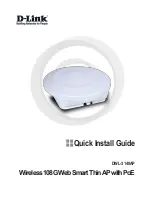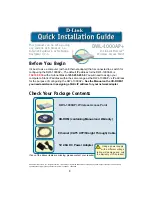
November
2,
2010
Page 4
This device complies with Part 15 of the FCC Rules. Operation is subject to the following
two conditions: (1) This device may not cause harmful interference, and (2) this device
must accept any interference received, including interference that may cause undesired
operation.
FCC Caution:
Any changes or modifications not expressly approved by the party
responsible for compliance could void the user's authority to operate this equipment.
INDUSTRY CANADA STATEMENTS
Operation is subject to the following two conditions: (1) this device may not cause
interference, and (2) this device must accept any interference, including interference that
may cause undesired operation of the device.
To reduce potential radio interference to other users, the antenna type and its gain should
be so chosen that the equivalent isotropically radiated power (e.i.r.p.) is not more than
that permitted for successful communication.
This device has been designed to operate with the antennas listed below, and having a
maximum gain of 2.0 dB. Antennas not included in this list or having a gain greater than
2.0 dB are strictly prohibited for use with this device. The required antenna impedance is
50 ohms.
List of all Antennas Acceptable for use with the Transmitter
20AWG Insulated tinned-Cu wire 3.82in (97.0mm).
Nearson S467AH-915 (SMA rev polarity).
OEM Responsibilities to comply with FCC and Industry Canada Regulations
The
0H7699
Module has been certified for integration into products only by OEM integrators
under the following conditions:
1.
The transmitter module must not be co-located or operating in conjunction with
any other antenna or transmitter.
As long as the two conditions above are met, further transmitter testing will not be
required. However, the OEM integrator is still responsible for testing their end-product
for any additional compliance requirements required with this module installed (for
example, digital device emissions, PC peripheral requirements, etc.).
IMPORTANT NOTE:
In the event that these conditions cannot be met (for certain
configurations or co-location with another transmitter), then the FCC and Industry
Canada authorizations are no longer considered valid and the FCC ID and IC
























